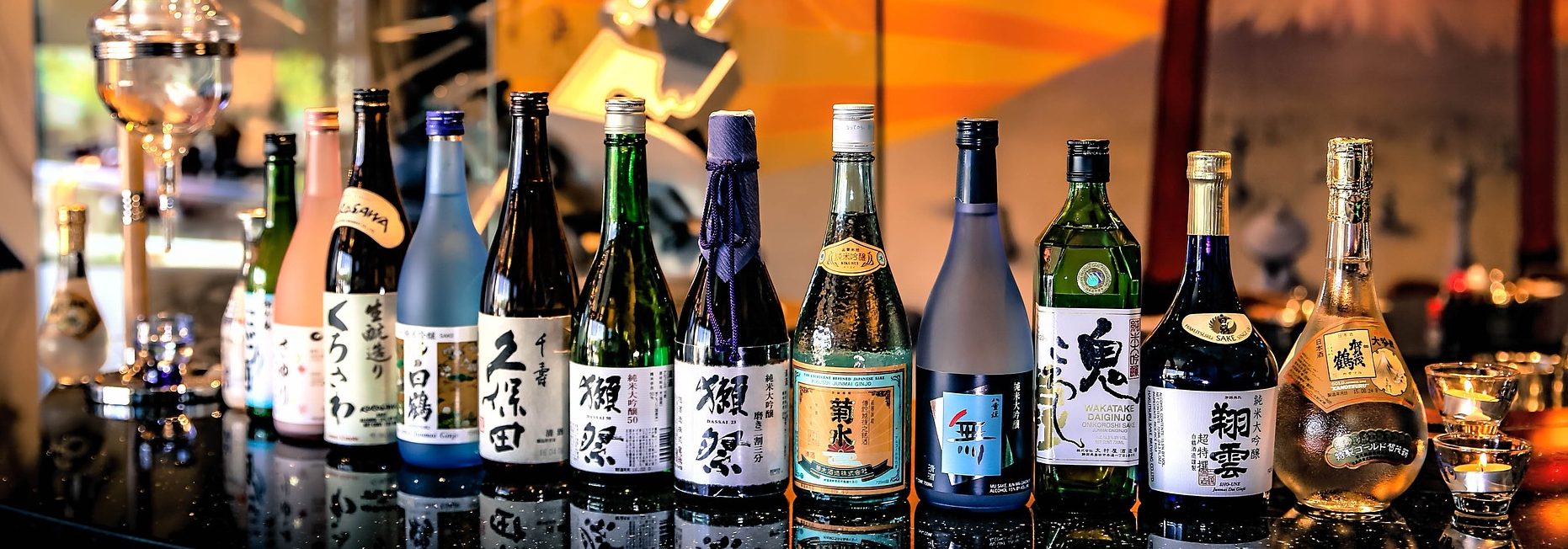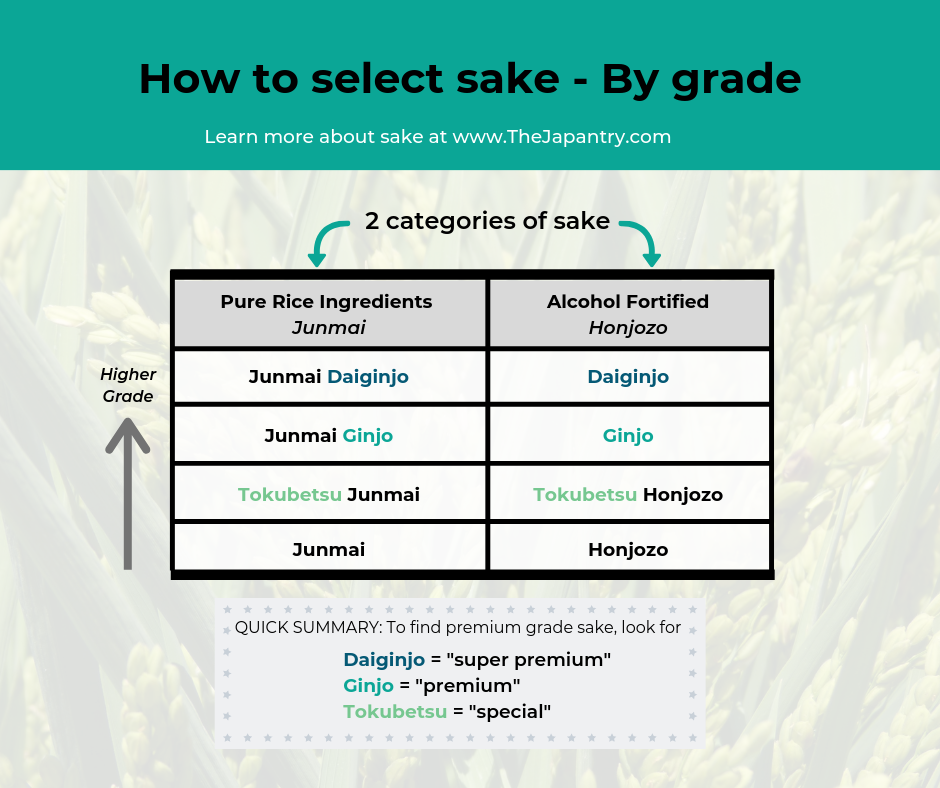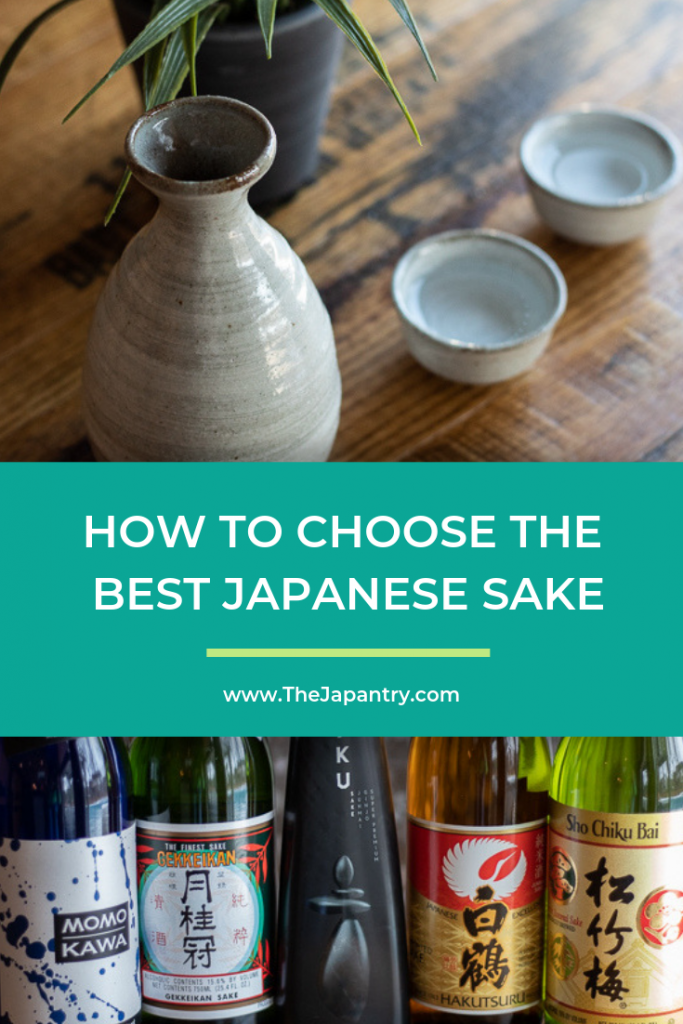
The sake aisle at your local grocery or specialty shop can be pretty intimidating the first few times, especially if there are a lot of choices. How do you know good vs. poor quality? What characteristics can you expect out of all these varieties? What’s the difference between all these sake options?
If you are like me, the first few times purchasing my own sake I generally relied on a couple of rules that might do in a pinch: top shelf vs. bottom shelf, and price. In general, people stocking alcohol still adhere to the general rule of better quality on top at eye level, and lower quality down near the floor. But that rule is only as good as the person doing the stocking, and there is no guarantee they know good from bad (especially with sake compared to other, more common liquors). And if you rely on price, you might just end up overpaying for some boutique sake that you end up not liking anyway.
Instead, one way to really refine your sake-buying habits is to get familiar with the general categories of sake grades.
How is sake graded?
Sake is graded based on the rice polish ratio – meaning the amount of the rice kernel that is left after the polishing stage of the brewing process. With polish ratio, lower is better, meaning less of the kernel remains after polishing (i.e., the rice has been more thoroughly milled to remove the exterior of grain unnecessary for sake brewing).
Highest grade of sake has as much as 50% or more of the rice polished away down to the starchy core. Milling rice to make sake is an arduous process, taking about 48 hours to produce polished rice to create the top-grade sake.
Two main classifications of sake
Before we go into how the sake is graded, it’s important to note first that there are two general classifications of sake based on their brewing process:
- Junmai which is brewed using pure rice ingredient
- Those brewed with the addition of alcohol during the brewing process
Don’t worry – these “Junmai” sakes still have plenty of alcohol, but rely on the natural brewing process and rice breakdown rather than adding alcohol directly.
How to determine the sake grade
You will usually see one of the following words on a sake label to indicate the grade. Those sakes with higher grades on the list will tend to be sweeter, more fragrant, and lighter, while those on the bottom may be dryer with stronger, more unpredictable flavors. Below is a helpful chart:

That might seem like a lot of terms, but you’ll notice that these words appear in the top two categories of each grading list:
- Daiginjo = super premium
- Ginjo = premium
If you remember nothing else, just remember to look for either of these two terms when shopping for your sake, and that will help steer you toward a higher-end product.
What does it mean if the sake grade is not listed?
If you don’t see any grade terminology on the label, that means the sake is ungraded and is of generally lower quality than any of these listed premium sakes. It’s worth mentioning that the majority of sakes available in the market are not graded. Non-graded sake may be a perfectly acceptable sake. But the rice simply has not been polished enough during brewing to earn a named grade.
Related topic: Learn how to determine if sake should be enjoyed hot or chilled
Shop Related Products:
Pin it for later!

Related Posts
Salty Shiba (Shiba Dog) Cocktail Recipe
Not every dog owner can say that they have a cocktail drink named after the…
July 2, 2019The best way to heat Japanese sake
There are two main methods to heat your sake at home; one a bit more…
May 15, 2019





Leave A Comment